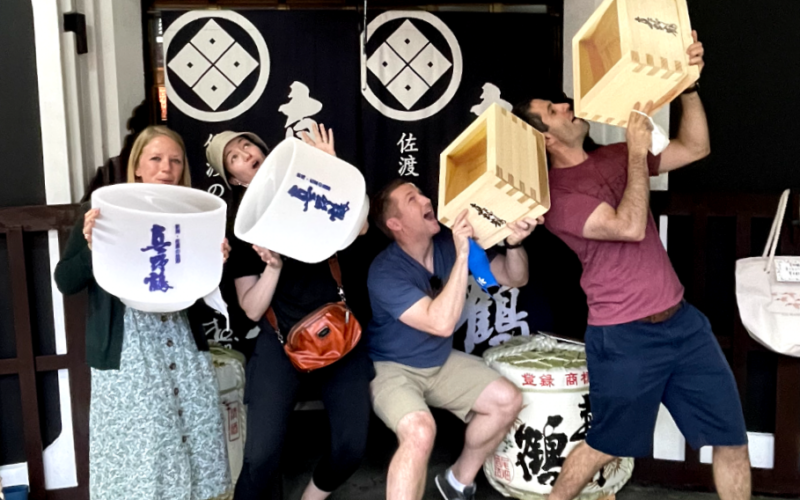Sake is Japanese alcohol made from fermented rice. It is as diverse as wine, but a far harder world to jump in to considering we can’t read any labels and Google Translate produces things like “Large time vertical drop” and “I’m afraid of husband”. It is generally 15% alcohol and can range from savory, umami, buttery flavors to delicate, fruity, floral flavors. In my experience it is nowhere near as sweet as many white wines and has a silky, starchy feel. In Japan, the sake bottles are enormous; easily the length of your arm, and dirt cheap! But you can also find mini bottles everywhere, making it easy to try new things. Here are our favorite sakes so far and an easy breakdown of the sake process.
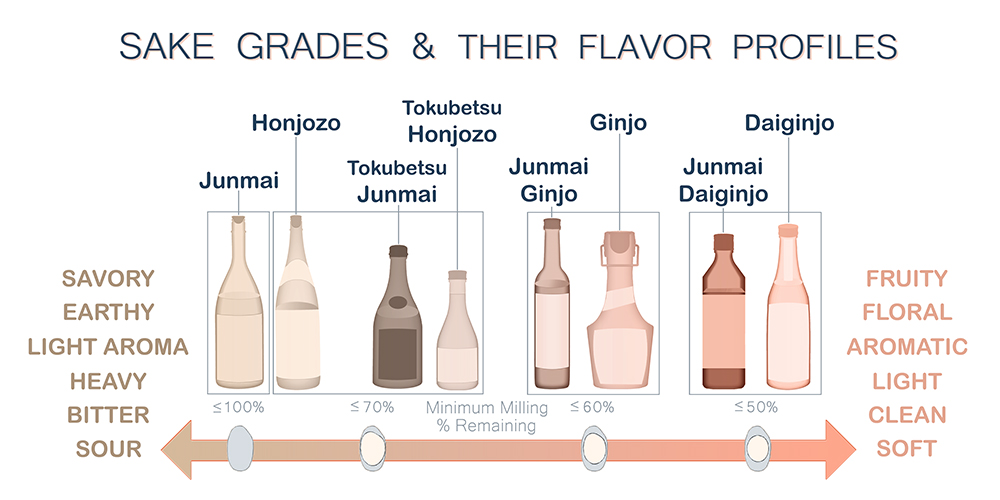
Pro Tip: “Sake” actually means “alcohol” in Japan. If you want to ask specifically for Sake like a native, say “Nihonshu”.
Shopping Tip: Sometimes you won’t get any results if you search for these bottles in English on Amazon JP (or Rakuten or what have you), so try copy pasting the Japanese name too.
Tasting Tip: A list of our favorite tasting places is at the bottom. My favorites have all been educational experiences where signage or an English speaker was able to tell me what I was trying and why I did or didn’t like it. Tastings are generally short (15-30 minutes), however if the brewery has any seating or restaurant areas you can make an afternoon of it. Be aware that if you drive there, they may ask who is DD and only give them amazake or water.
Koh Daijingo Sake (凰). Sample it in a tasting at our local Ozawa Sawanoi Brewery in Ome for about 4 bucks and get a free sake cup! It’s a great way to spend an afternoon by the river. Best served chilled or at room temperature.
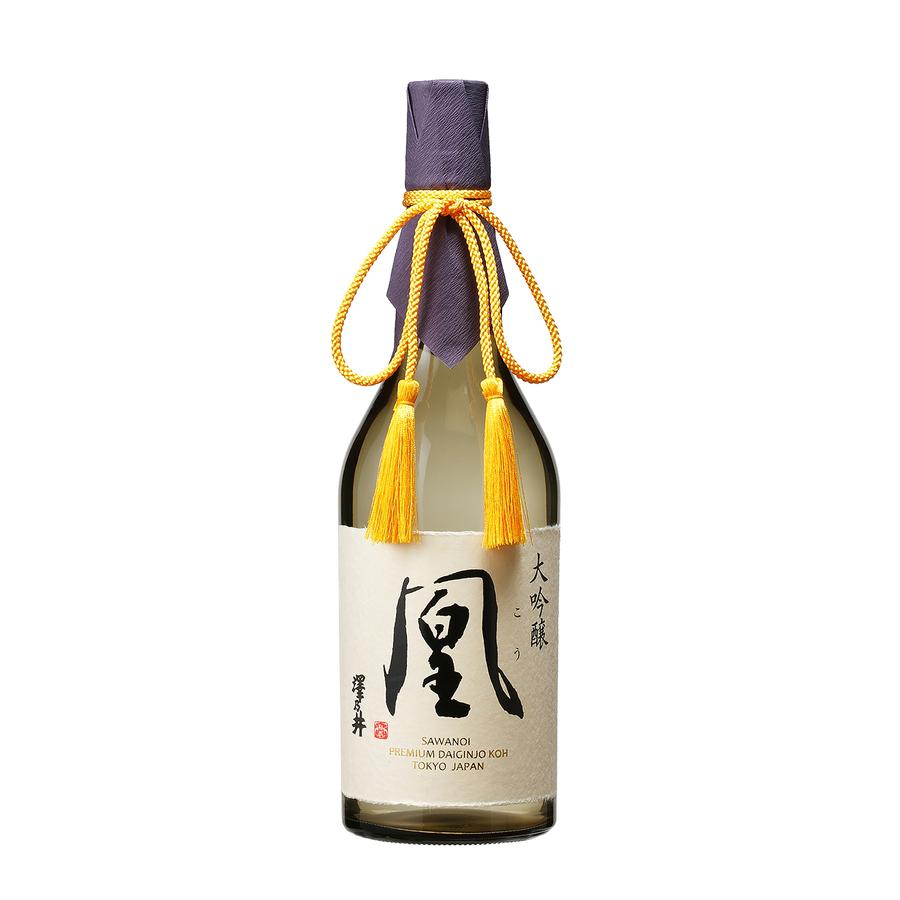
Koro Special Junmai Sake (香露 特別純米酒 -日本酒 熊本県). Brewed by the Kumamoto Prefectural Sake Brewery Research Institute, we tasted this in Osaka and haven’t been able to find it locally! Described as sweet umami notes with moderate acidity and sharp aftertaste, best served lukewarm. This has a sweet start and an umami finish.

Nobu “The Sake”, a Junmai Daiginjo sake from Sado Island’s Hokusetsu Brewery. Described as medium-bodied, clean, and complex with floral notes. Can be served chilled, at room temp, or lukewarm.
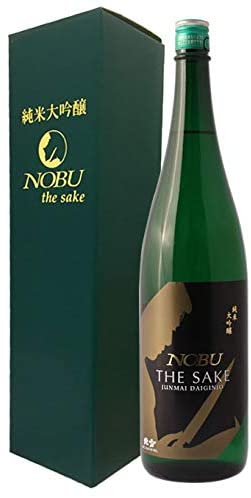
Kainokaiun Junmai Umakara Fuji Sake, brewed at the Ide Sake Brewery with water from Mt. Fuji’s snow melts, aged 1 year, and bottled in a cute Mt. Fuji bottle. Described as rich and dry. We drank this in celebration after climbing Mt. Fuji!
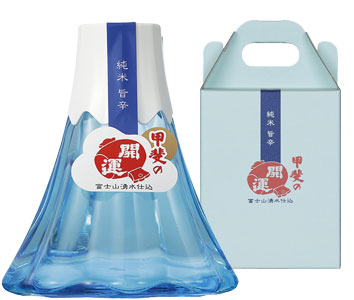
Masumi “Okuden Kantsukuri” Junmai (“Mirror of Truth”): This sake brand is well known and easy to find. The Masumi brewery is famous for isolating #7 yeast. Masumi Okuden is creamy but has a bright finish. Tasting notes include steamed rice, banana, cocoa, and creme brulee. Good served both warm and chilled, easy drinking.
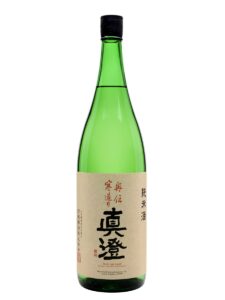
Favorite Novelties:
Sake aged in Whisky, Bourbon, and Brandy barrels! They still taste like sake but with a woody, whisky-like finish, and none of the burn of liquor. Randi loves the set from Fukugao. We bought them at the Niigata Ponsyu train station and plan on ordering more!

Amazake: This is a delicious drink made from the waste of the sake brewing process: sake lees. It reminds me of a mix between horchata and eggnog. Depending on the brewery it can be sweet or savory with texture ranging from oatmeal to skim milk. I like it served steaming hot in winter. You can find this drink at any brewery, at many shrine sales, and at most Japanese grocery stores, and its easy to make at home with just hot water and sake lees (available on amazon, at specialty stores in the U.S., or at breweries and groceries in Japan). It’s generally alcohol free or very low alcohol and usually less than $5.
Kitayuki Amazake, from the famous Hokusetsu brewery on Sado Island (favored by Robert De Niro and Nobu Restaurants). This one is Keith’s favorite and is a less-sweet, mild variety that is easy to drink. The fox on the label is a Tanuki! Not just any lucky big-balled raccoon dog, but the legendary shapeshifting Tanuki called Danzaburu that once lived on Sado island. Only one ingredient: 60% polished rice grown in Niigata, Japan.

Amazake at Sawanoi-Ozawa Brewery in Ome. This one is Randi’s favorite. It’s a sweeter variety and thick with rice. You can order it at the vending machine on their tasting patio for barely $2 (200 yen) and sip in on a cold day while viewing the river.
The Basics of Sake Brewing:
Rice is grown, harvested, washed, and polished. Sake quality is determined by how much the rice is polished before sake is made from the starchy inner core. The rice is then steamed, cooled, and fermented with the addition of Koji mold spores.
There are four main types of Sake (and several others, less well-known)
Daiginjo: 50% minimum polishing. Usually served chilled.
Ginjo: 40% minimum polishing, can be light, complex, and fruity. Usually served chilled.
Honjozo: 70% minimum polishing with small amount of added alcohol for aroma or flavor. Easy drinking, served chilled or warm.
Junmai meaning “pure rice” – nothing but rice, water, yeast, and koji with no minimum polishing. Rich, full body with intense and slighty acidic flavor. Served chilled or warm.
Our favorite tasting spots so far:
1. Sawanoi Ozawa Brewery – our local favorite that started it all. See it on google maps. Get step by step instructions for you first tasting here.
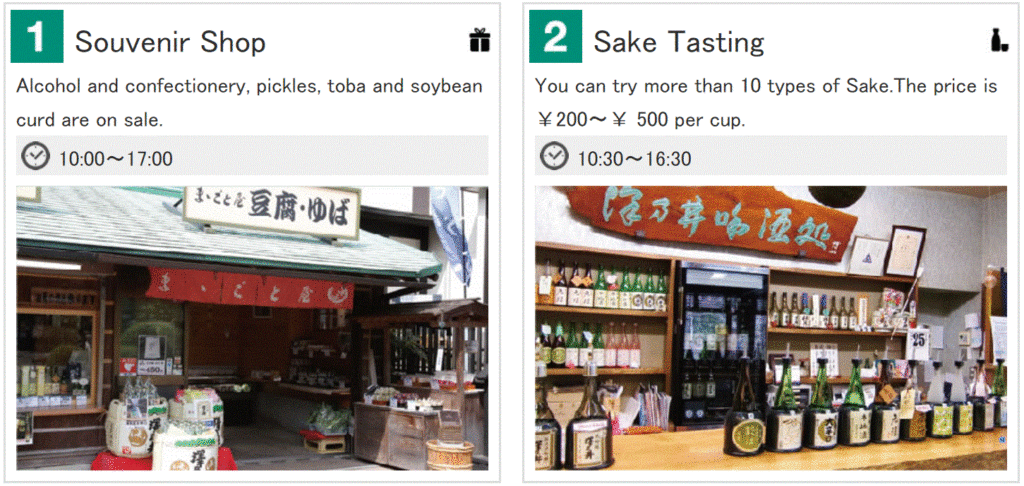
2. The Ide Sake Brewery – what a great tasting! Lots of educational materials to teach you about rice polishing, acidity, and more, plus a great gift shop where I bought a sake warmer for winter. See it on Google Maps. This is a fantastic add on to any trip near Mt. Fuji – see our itineraries here.
3. The basement of the Shimoda Sake Store in Osaka, where we tried aged sake for the first time, and found one of our favorites, Koro sake.
4. This GIANT sake wall at the Ponshukan Niigata Train Station – try dozens of sakes at your own pace by pushing a button for an automated pour. There’s a massive gift store too. See it on Google Maps.
5. Hokusetsu Sake Brewery in Sado. See it on Google Maps. They also have Umeshu (plum wine) and Amazake. There are several other breweries on the island too, but this was our fav.
